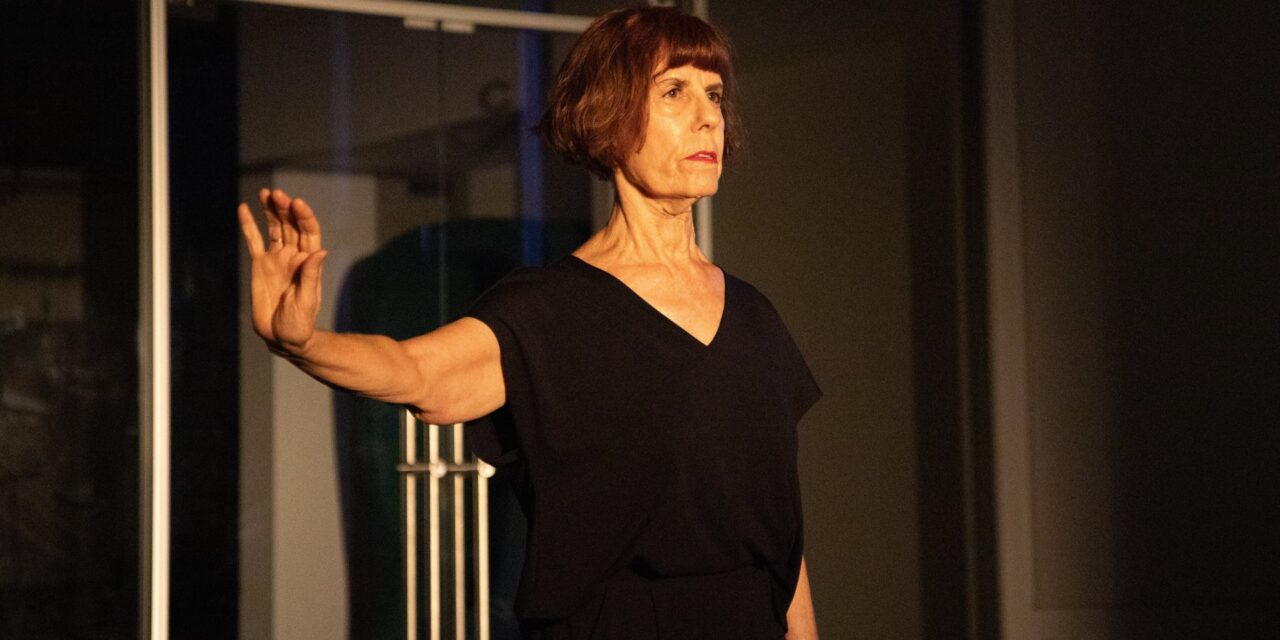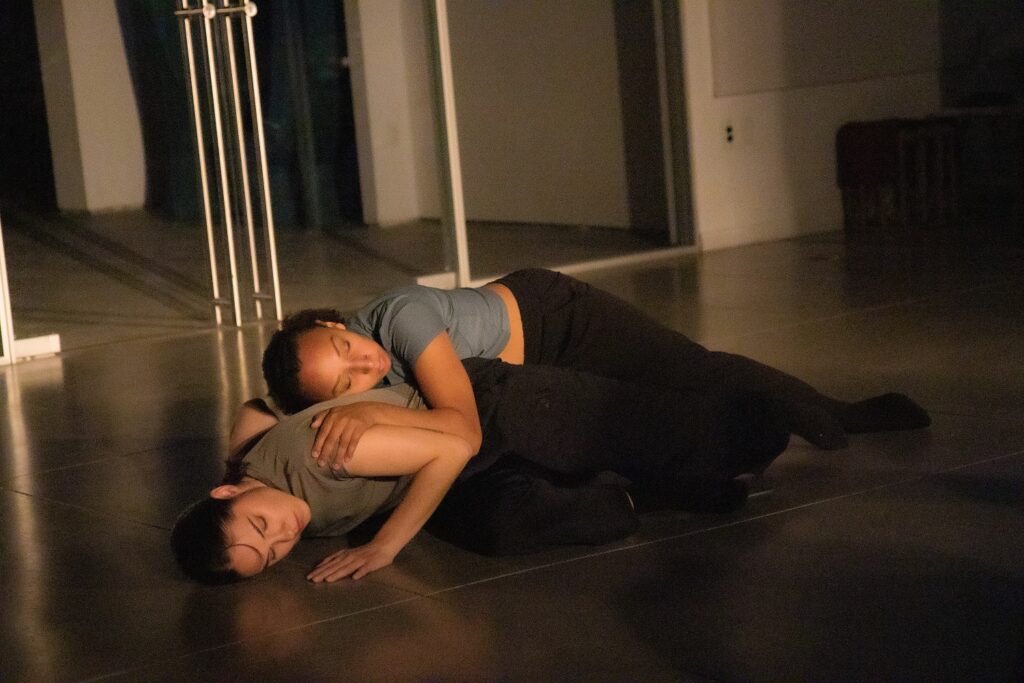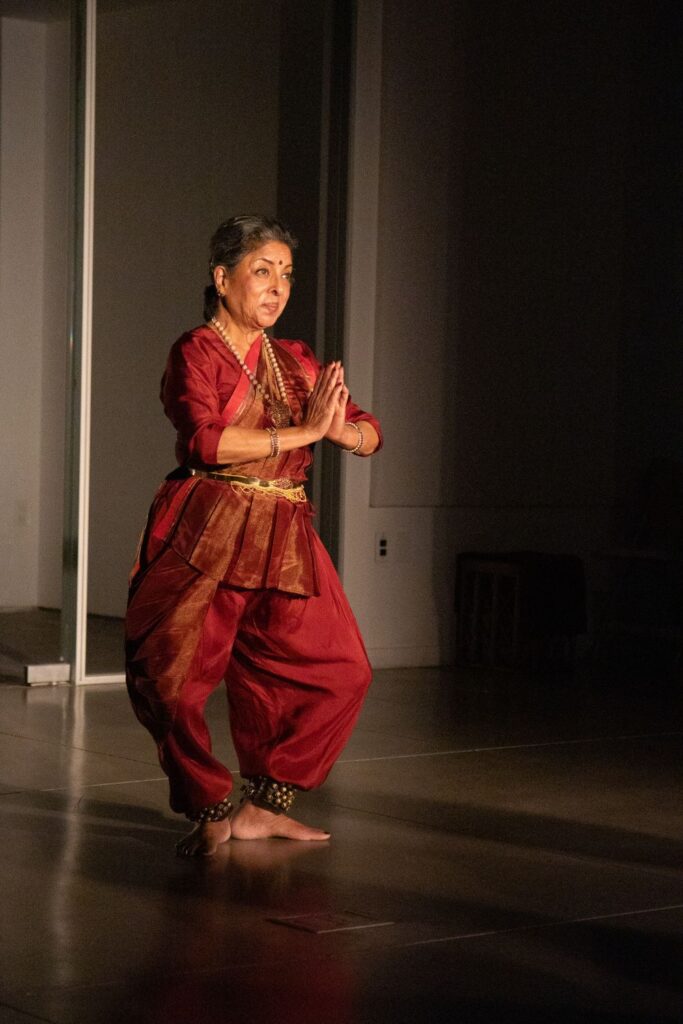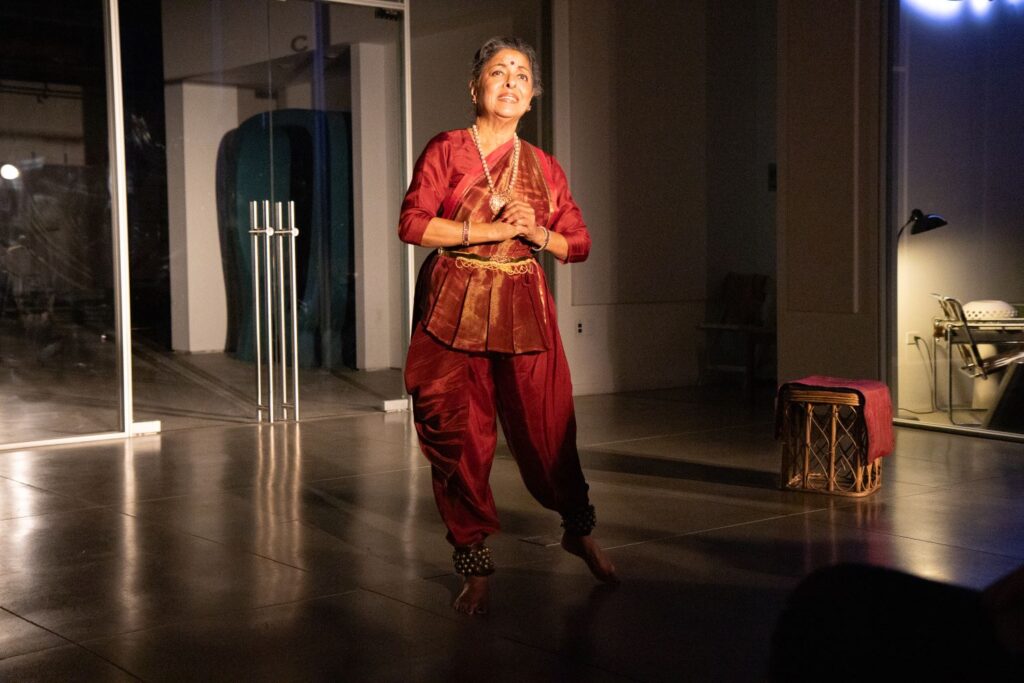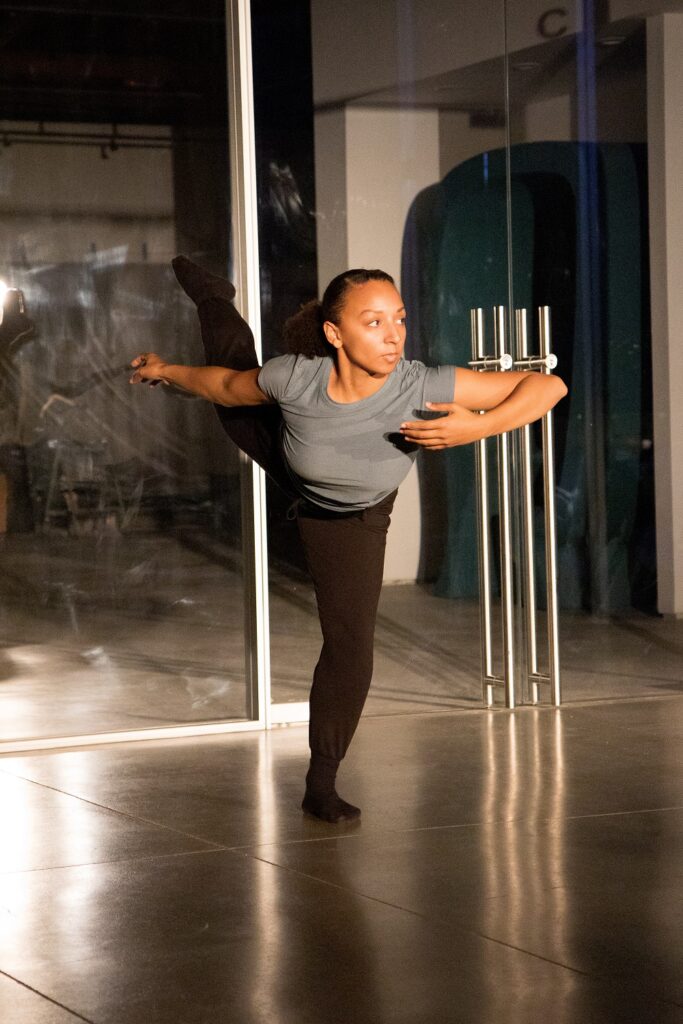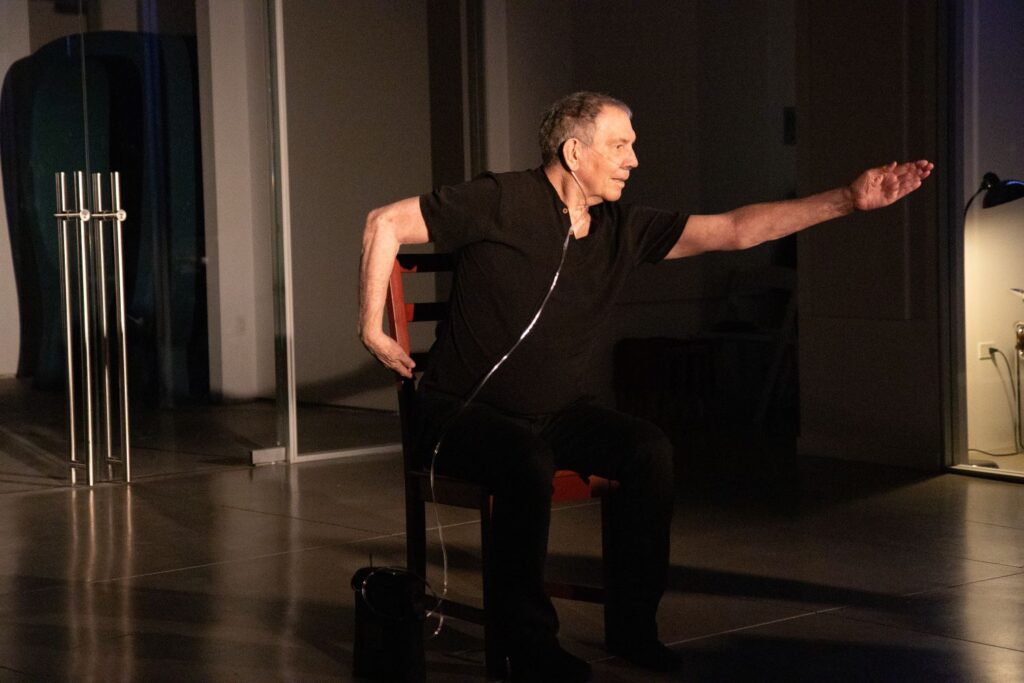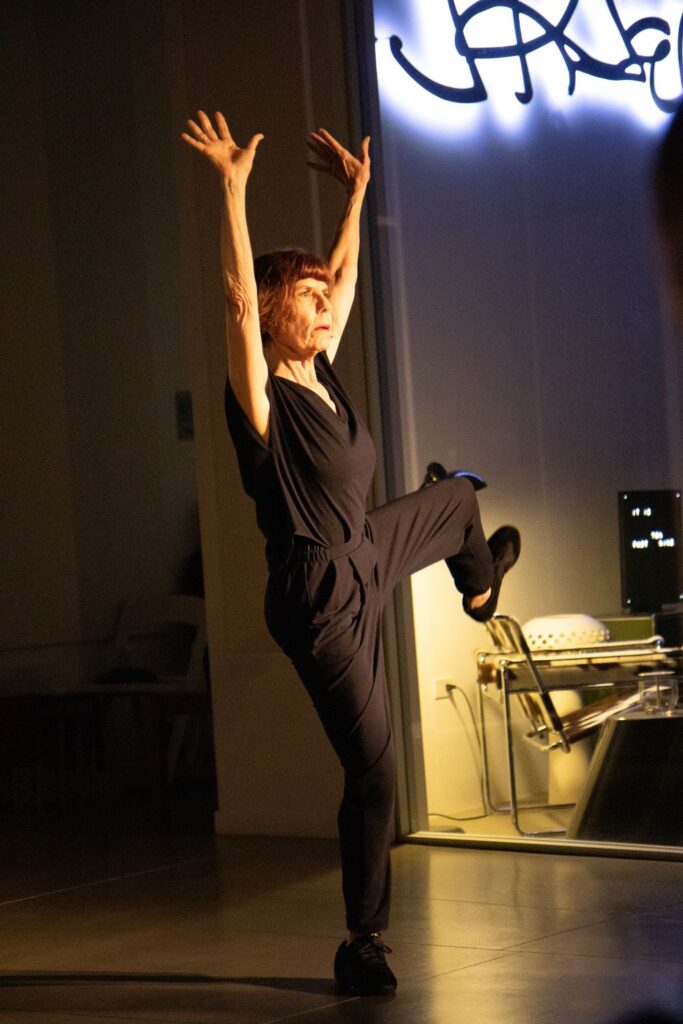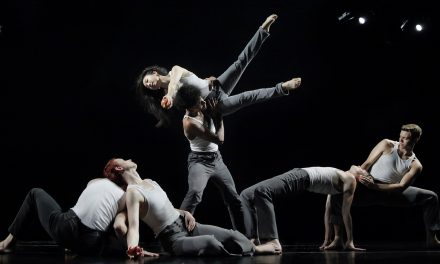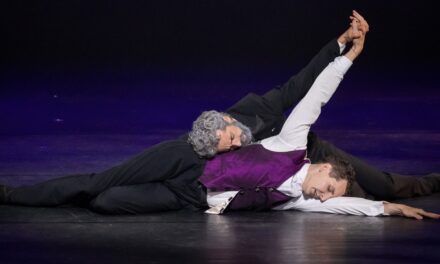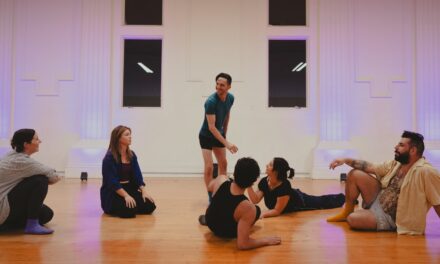There are evenings in dance when the stage feels less like a platform and more like a threshold…an opening into the quiet interior of human experience. Donna Sternberg’s Thriving was such an evening. With the same fearless curiosity that guided her celebrated Science series, Sternberg turned her gaze toward the emotional terrain of aging, inviting us into a world shaped by memory, devotion, loss, and the fierce resolve to continue creating. What unfolded on November 9, 2025, at the Helms Design District in Culver City was a meditation on time itself: how it shapes us, how we resist it, and how, if we are brave, it can illuminate the very essence of why we dance.
Throughout the evening, Sternberg’s young company, Alyssa Milligan, Rebecca Aguilar, and Alexandra Paige appeared like threads between eras. They shifted the space, rearranged the sculptural environment, framed entrances, and prepared exits, not as stagehands but as living continuities. Their designs and seamless transitions shaped the atmosphere, guiding the audience gently from one emotional landscape to the next. Their presence made the concert feel like a single evolving organism rather than a sequence of separate works – an embodiment of legacy in motion.
Ramya Harishankar, Oguri, Jeff Slayton, and Sternberg herself – each a contributor and a cornerstone of our dance community, came to the evening shaped by lifetimes of dedication and generosity. Performers, mentors, teachers, and innovators, their legacies were made vividly clear. What they have given to the world of motion, emotion, storytelling, and memory must not be forgotten. Their bodies and spirits hold decades of artistry and offered those stories to us with grace.
The initial offering opened with a movement piece by Milligan that led to the luminous presence of Ramya Harishankar, Founder of the Arpana Dance Company and so appropriately described as a “legacy artist.” Honored in 2023 with an Individual Artist Fellowship from the California Arts Council. Among many accolades, she performed worldwide and has shared her mastery as a Segerstrom Center for the Arts teaching artist since 1989. Her magnetism and authority were immediate.
Beginning with Pushpanjali (Sanskrit for “flower offering”), she brought a reverent stillness over the audience. The traditional Bharatanatyam vocabulary—her precise rhythms, gliding phrases, sudden foot slaps, subtle shifts of gaze and head unfolded in breathtaking contrasts. Her vibrant dhoti and choli against the gray industrial backdrop and glass doors created a striking juxtaposition: warmth and ancient color glowing within a warehouse of steel and angles. Then with Padam, a 16th-century love song by poet Kshtreyya, she bridged centuries—offering a meditation on devotion, longing, and human tenderness. In the chaos of today’s world, her performance felt like a restorative invocation, a reminder of what is essential and enduring. A perfect beginning to this celebration of maturity.
Then came a work by the incomparable Oguri—Japanese dancer and choreographer, and co-founder (with Roxanne Steinberg) of Body Weather Laboratory Los Angeles. Internationally known for merging movement, environment, and large-scale visual installations, he offered Dance Emerges Out of Time; music Zenji: a song by Kenji Endo, was a tribute to unforgettable ancestors, collaborators, and to all who “worked the soil and touched the earth.”
Dressed in a simple flax-colored shirt and pants, cinched with an earthen-toned cummerbund and topped with a straw hat, he evoked the quiet dignity of laborers, creators, and spirits who shaped his past. His movement – at first sustained and meditative, almost Butoh-like, expanded into sudden flares, climbing against glass walls, revealing a deep emotional palette. The imagery marked a profound respect for those who had guided, inspired, and built alongside him. His tribute was tender, raw, and deeply human.
As a bridge, the young company dancers again framed the transition, altering the space with subtle rituals of placement and light, their presence smoothing the shift between Oguri’s tender spirited celebration and stark honesty that was to follow.
When Jeff Slayton entered, a former member of the Merce Cunningham, and Viola Farber Dance Companies, along with heading his own Jeff Slayton & Dancers, he brought profound history and legacy. Tall and slender, stately at 6’2,” yet unassuming, irresolute, he moved into the performance space. His stark, quiet presence contrasted with Oguri’s poetry. To the evocative score by Eric Rushkin, he breathed, lifted an arm, and unfolded his gesture as though extending beyond the building’s very walls. In that one movement, the room was held—still, listening. The piece, titled Now, charted a journey of discovery, triumph, struggle, and return.
Dressed simply, he carried with him a small portable oxygen concentrator. His partnership with the long tubing became a riveting dialogue: resistance, surrender, effort, and will. What emerged was a ballet of generations—a living testament.
In his piece Now, Slayton offered a portrait of aging stripped of ornament yet rich with truth. A lifted arm, a measured rotation, a trembling stance, a breath caught against the limits of the body—every gesture was a reckoning. His movement unfolded not as a lament but as a declaration: that the act of dancing, even when effort becomes visible, is an act of perseverance and meaning. The tubing at his side coiled like a companion, sometimes hindering, sometimes yielding, and Slayton shaped that tension into emotional architecture of startling directness. This moving bitter-sweet reminder, a meditation of art and wisdom, made its mark. And in my head Hermes words from Hadestown plays back …
“Cus, here’s the thing,
To know how it ends
And still begin
To sing it again
As if it might turn out [differently] this time…” (Anais Mitchell)
…Is a haunting reminder of survival
Sternberg herself closed the evening, stepping into the final light with the unmistakable energy of someone still enchanted by the possibilities of movement. There was joy in her phrasing, curiosity in her lines, and a vitality that made the room brighten in response. Her choreography, titled What You See, infused with playfulness, reverence, and a spark of mischief, felt like a declaration that thriving is not measured by age but by attention, generosity, and the willingness to remain open to wonder. Supported by her dancers, she offered a finale that felt both a culmination and a beginning.
Thriving was not a concert assembled from separate pieces; it was a single tapestry woven from multiple generations, each artist’s voice distinct yet held within a collective breath. The youthful dancers, in their bridging designs and transitions, acted as the connective tissue between eras – carrying ideas from one artist to the next, reminding us that legacy is not static but alive.
What Sternberg created was a rare evening in which dance became an act of witnessing. We were invited to see the body as archive, as storyteller, as survivor. We left with the sense that beauty does not recede with age; it changes shape, deepens, and reveals new colors. And in that revelation, the audience found not melancholy but hope – a reminder that to continue is itself an art.
To learn more about Donna Sternberg & Dancers, please visit their website.
To learn more about the Helms Design District in Culver City, please visit their website.
Written by Joanne DiVito for LA Dance Chronicle.
Featured image: Thriving – Donna Sternberg in her work What You See – Photo by Alaya Oni.

